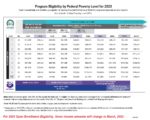Each county handles Medi-Cal eligibility and enrollment. The California Department of Health Care Services manages the Medi-Cal programs. You need to be in communication with your county Medi-Cal office to update information in the Medi-Cal system. To find your county office address, phone number, and website visit https://www.dhcs.ca.gov/services/medi-cal/Pages/CountyOffices.aspx










